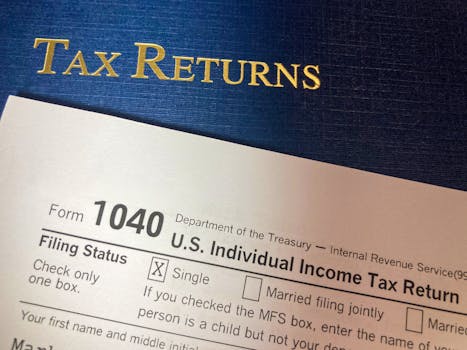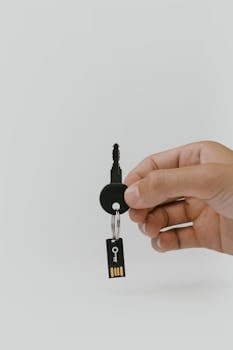Personal Finance
Credit cards for beginners: limits, rewards, and annual fees — best starter credit cards USA
Learn how to pick, use, and maximize the best starter credit cards USA. Get clear tips on limits, rewards, and annual fees. Grow your credit and earn valuable perks from the start.
Advertisement
Grabbing your first credit card feels exciting and just a little daunting. Most newbies want those best starter credit cards USA perks without running into preventable mistakes early on.
Tapping into credit cards wisely plays a key role in building a solid financial foundation. They unlock spending power, help establish credit, and if chosen well, offer valuable rewards.
This guide breaks down starter limits, beginner-friendly rewards, and what annual fees really mean. You’ll learn step-by-step how to pick and use the best starter credit cards USA like a pro.
Choosing a Card: Steps To Find the Right Starter Fit
Picking the best starter credit cards USA means knowing your options, your habits, and your long-term goals. Here you’ll cut through confusion and start with a practical approach.
Start by noting what you value—low fees, no annual charge, or easy rewards? Compare these must-haves with actual card offers instead of flashy marketing language.
Compare Starter Card Features Efficiently
Write down three daily expenses: groceries, gas, or streaming? See which best starter credit cards USA reward spending in those areas, instead of chasing less relevant perks.
For example, imagine you spend $150 each month on groceries. A card with 3 percent cashback here gives $54 yearly, covering many annual fees on these starter cards.
Use this method to compare cards side-by-side by real spending, not hypothetical maximum rewards, to make the best-cost choice today.
Solidify Your Goals Early
Decide whether you’ll carry a balance. If yes, look for best starter credit cards USA with low interest rather than points, since interest can erase reward advantages quickly.
If you can pay off each month, prioritize sign-up bonuses, cashback rates, or statement credits—not just introductory offers, but ongoing value. Note expiry dates on any promotional terms.
Steer clear of cards advertising huge bonuses requiring large minimum spends if your typical purchases don’t match. Focus on rewards you’ll reliably earn, not one-time windfalls.
| Card Name | Annual Fee | Starting Credit Limit | Best Feature | Takeaway |
|---|---|---|---|---|
| StarterPlus | $0 | $300 | Simple Cashback | No-fee cards let you build credit with less risk, especially if you’re a first-timer. |
| CashBackOne | $39 | $500 | Grocery Bonus | Match your main expense (like groceries) with bonus categories for faster rewards accrual. |
| ZeroAnnual Basic | $0 | $400 | No Foreign Fees | Travelers or non-citizens may benefit from avoiding extra international charges. |
| StudentEdge | $0 | $300 | Student Perks | Cards tailored for students add forgiveness for missed payments and small balance boosts. |
| BuildCreditUSA | $29 | $350 | Credit Tracking | Some cards offer free credit score updates, perfect for tracking your growth as you use the best starter credit cards USA. |
Understanding Limits and First-Time Credit Habits
Knowing your initial credit limit sets realistic expectations for both your monthly budget and your credit growth. This section helps you manage, increase, and leverage your starting limit.
Most best starter credit cards USA start with limits between $200 and $500. Think of this as training wheels: small enough to teach discipline, high enough to build a routine and trust.
Use Limits to Boost Long-term Scores
Keep your spending below 30 percent of your limit. For example, on a $300 limit, try not to go over $90 at any moment in the month.
Pay more than the minimum—ideally, pay the full balance each month. This habit directly strengthens your payment history and supports fast credit score growth with any card.
- Set alerts for when your spending reaches half your limit so you never cross 30 percent accidentally.
- Make a mid-month payment in addition to your regular due date to lower your utilization rate further.
- Ask for limit increases after six months of on-time payments—the best starter credit cards USA reward discipline with periodic reviews.
- If declined for an increase, wait three months and try again after demonstrating stronger usage patterns or increased income.
- Log your progress on a calendar to see patterns and celebrate small jumps—positive reinforcement keeps good habits rolling.
Within a year of good behavior, you’ll likely double your limit—especially with the best starter credit cards USA designed for growth.
Limit Pitfalls and Recovery Steps
Accidentally maxed out your card? Stop new purchases immediately. Pay more than the minimum, and avoid cash advances, which add extra fees and interest instantly.
If you realize your payment will be late, call the card’s customer service and explain. Most best starter credit cards USA offer one-time forgiveness for first slip-ups.
- Freeze your card (temporarily) via the app to prevent impulse spending while you catch up on payments and avoid unplanned late fees.
- Switch auto-payments (like streaming) to debit until you regain control to prevent further over-limit problems.
- Check statements carefully for hidden interest or fees sneaking in after a limit breach—catching these early can save $20 or more quickly.
- Set up balance alerts at 80 percent limit as a safety net until you’re confident in your tracking abilities.
- Reach out proactively for hardship programs if you spot a financial rough patch brewing; the best starter credit cards USA prefer working with committed cardholders.
Turning a setback into a learning experience sets up stronger habits for your next card or eventual limit increase.
Rewards, Points, and Cash-Back Principles in Practice
Maximizing rewards on your first credit card is about matching the card’s strengths to your own spending style. This helps those best starter credit cards USA boost value in your actual life, not someone else’s.
Rewards types typically fall into three buckets: simple cashback (straight returns on purchases), category bonuses (specific store or expense boosts), and points you can redeem for travel, gift cards, or credits.
Simple Cash-Back Strategies for Everyday Users
Opt for flat-rate cashback if your expenses are broad or unpredictable each month. For example: You buy gas, groceries, and a mix of travel, so a 1.5 percent card adds up fast.
Cards with categories (like 3 percent on groceries) beat flat-rate options if you’re reliably spending there. Compare one month’s statement as a test before deciding.
Cashback redemption varies: some cards auto-credit, others require you to request. Set up push notifications so you never leave money unclaimed, especially for best starter credit cards USA cashback tiers.
Points and Perks: Navigating Redemption Paths
If you like travel, target cards offering points you can redeem at airlines or hotels within the US. Realistically, most best starter credit cards USA favor easy cash or statement credits over complex points systems.
Understand that some points expire—mark your calendar when you earn a large batch. Use portals linked from your bank’s website for bonus multipliers on specific purchases, especially tech and gift cards.
Ask yourself: Would you rather have $3 now or wait to save $5 on a future trip? Pick a card matching your patience and lifestyle, not someone else’s aspirational account.
Annual Fees: When Paying Is Worth the Extra Perks
Annual fees sound intimidating, but sometimes paying one means you get bigger bonuses, better benefits, or easier growth with the best starter credit cards USA.
Compare the fee to the actual reward dollars you’ll earn in a year through honest monthly spending projections, not best-case scenarios.
Weighing Value in Annual Fee Cards
Don’t dismiss a $29–$39 annual fee without comparing total yearly rewards. If your regular habits reliably generate $60 in cashback, paying $39 still leaves you ahead.
Calculate break-even by dividing the fee by your expected cashback or bonuses—real-fitting best starter credit cards USA make this math simple, even for first-timers.
Track your value regularly. Some cards have annual credits (like free streaming) as perks—set a reminder a month before renewal to assess if you’re really gaining more than you pay.
Using Best Starter Credit Cards USA Responsibly: Building Habits Early
Responsible card use sets the stage for bigger limits and better offers down the line. Adopting the right mindset immediately brings steady growth with best starter credit cards USA.
Make budgeting part of your routine, not an afterthought. Treat your credit account as you would a checking account—never spend more than you’d be willing to pay in cash today.
Scripts for Communication and Problem Solving
If confused by your statement: “Hi, I noticed a charge I don’t recognize on my statement. Can you clarify what this is?” Calm, direct language keeps calls productive.
Asking for a fee waiver: “I’m a new account holder, and I had a late payment last month. Is it possible to reverse the fee as a one-time courtesy?”
Requesting a limit review: “Since opening my best starter credit cards USA account, I’ve maintained on-time payments and increased my income. Could you evaluate my eligibility for a higher limit?”
Growing Confidence Over Time
Update your budget and goal sheet every month. Noticing even $50 extra in available credit can feel like progress and keeps motivation high using best starter credit cards USA.
Celebrate small wins: credit score increases, first cashback redemption, or first successful fee negotiation make the learning curve feel worthwhile.
Connect with peers or trusted advisors who have navigated starter cards. Their experience often reveals overlooked tips, especially for regional best starter credit cards USA offers.
Common Scenarios: First Card Use in US Life
Picturing yourself at a register, using a new card for the first time, can reduce stress. These realistic scripts ensure starter cards boost your confidence and help you avoid rookie errors.
Your first purchase: Begin with a small, routine expense like coffee. Pay off immediately in the app—this locks in your first positive credit habit fast with any best starter credit cards USA.
Building Credit With Controlled Spend
Buy $25 in gas weekly, pay each Sunday. You show the card issuer you’re serious. Within three months, call in for a limit review—an early ask, especially if your record is spotless.
Never let a friend borrow your card. Even if it feels harmless, you risk fees or missed payments on your record—ask friends to use their accounts, not your best starter credit cards USA.
Traveling for the first time? Notify your issuer using the app. This prevents mistaken fraud alerts from blocking your card at hotels or cafes out of state.
Handling Rewards and Returns
If you return a purchase after earning cashback, the reward deducts; check your next statement to verify. Stay honest in your weekly budget review for accurate rewards math.
Store managers may offer instant discounts to use their card. Weigh this versus your best starter credit cards USA rewards. If you won’t keep the store card long term, stick to your main starter card.
After a year, if you’re ready for a higher-tier card, request an upgrade rather than closing your starter account—keeping accounts open supports your length-of-credit history.
Final Thoughts: Building Success With Best Starter Credit Cards USA
Approaching credit cards thoughtfully transforms them from a stumbling block into a launchpad. Best starter credit cards USA help establish healthy patterns from your first month.
Small steps—like setting limits, sticking to a monthly payment, or earning your very first cashback dollar—make a tangible difference for long-term US credit health.
Choose wisely, track your progress, and let each starter decision open doors to bigger opportunities: more travel, better rates, and genuine financial freedom.





